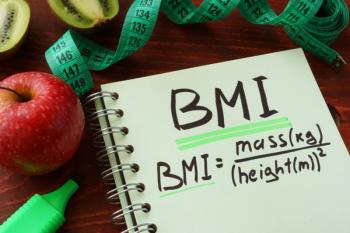
Model Finds Vancomycin and Fidaxomicin Most Cost-Effective CDI Treatments, With Caveats
Shifts in clinical treatment patterns could prompt investigators to revisit the cost-effectiveness question.
First-line vancomycin followed by second-line fidaxomicin is more cost-effective at treating Clostridioides difficile
The report, which was based on prices and cases in England, was published in the journal
Corresponding author Tom Bromilow, MSc, of the York Health Economics Consortium, and colleagues, developed an economic model to gauge the cost-effectiveness of common CDI therapies in accordance with guidance from England’s National Institute for Health and Care Excellence.
They noted that there were 12,273 cases of CDI in the 2020-2021 fiscal year in the United Kingdom (UK), and 1825 patients with a CDI diagnosis died (including all causes).
“Alongside poor outcomes, CDI also represents a substantial economic burden on healthcare,” they wrote. “One reason for this is the high level of recurrence associated with CDI, either as a relapse occurring up to 12 weeks following an initial resolution or as a re-infection after that.”
The model they developed used previously published data about CDI therapies, costs, and outcomes. After collecting the data, the investigators evaluated various sequences of first- and second-line treatments to see which sequence provided the best value. The analysis included 4 potential therapies: vancomycin, metronidazole, teicoplanin, and fidaxomicin. Cost-efficacy was evaluated using total cost and quality-adjusted life-years (QALYs).
The findings of the model were mixed. Initially, the authors found that first-line teicoplanin led to the lowest costs and highest QALYs. However, the committee advising the investigators said the clinical evidence supporting teicoplanin was generally low in quality, and thus Bromilow and colleagues decided to exclude teicoplanin from their analysis. The committee also advised against including second-line metronidazole as an option, since they said its efficacy as a second-line treatment was relatively low. In addition, the committee advised against including an extended regimen of fidaxomicin as an option, since that dosage level was not licensed in the UK and not commonly used.
Following those exclusions, the investigators were left with a pairwise comparison: fidaxomicin (FID) followed by vancomycin (VAN), or the same drugs in the reverse order. They found starting with vancomycin to be more cost-effective.
“In the base case, FID-VAN had only a 0.4% likelihood of being cost effective versus VAN-FID at a £20,000 ($25,494) per QALY gained threshold, and a 2.3% likelihood at a £30,000 ($38,241) per QALY gained threshold,” they concluded.
However, the authors were quick to note a number of limitations to their study. For one, they said the results were “highly specific” to the UK, since they were driven by current clinical practice in that country.
They added that their model assumed that the initial cure rates and recurrence rates for each antibiotic would be the same for both lines of therapy.
“While there were no clinical data to contradict this assumption, real-world efficacy may show that the cure rate changes with recurrence,” they said. “This meant that it is possible that the model overestimated second-line efficacy at different rates for each intervention, causing bias.”
They also said that since their scope was limited to first- and second-line antibiotic treatments, their analysis did not look at cost-effectiveness for patients who would need further rounds of therapy.
Finally, the authors cautioned that their work did not take into account increasing rates of antimicrobial resistance or the increasing use of other types of therapy, such as fecal microbiota transplants or live biotherapeutics. They said a new analysis using the model should be run when more clinical data are available for newer therapies.
Reference
Bromilow T, Holmes H, Coote L, Woods S, Pink J. Cost-effectiveness analysis of antimicrobial prescribing in the treatment of Clostridioides difficile infection in England. Pharmacoecon Open. Published online June 12, 2023. doi:10.1007/s41669-023-00420-3
Newsletter
Stay ahead of policy, cost, and value—subscribe to AJMC for expert insights at the intersection of clinical care and health economics.















































